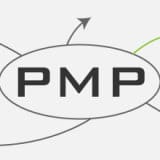PMI-ACP Study Notes: Domain III Stakeholder Engagement

[NEW! For the 2015 July PMI-ACP® Exam syllabus] The PMI-ACP® Exam consists of 120 questions which can be categorised into seven domain. The third domain: Domain III Stakeholder Engagement is the knowledge about “engaging current and future interested parties by building a trusting environment that aligns their needs and expectations and balances their requests with an understanding of the cost/effort involved. Promote participation and collaboration throughout the project life cycle and provide the tools for effective and informed decision making” (source: PMI-ACP® Examination Content Outline).
Domain III Stakeholder Engagement accounts for 17% of all questions in the PMI-ACP® Exam (i.e. ~20 questions among 120 PMI-ACP® Exam questions)
According to the PMI-ACP® Exam Content Outline, Domain III Stakeholder Engagement consists of 9 tasks grouped within 3 sub-domains:
Article Highlights
Understand Stakeholder Needs
- Identify continually who are the key stakeholders in order to understand stakeholders’ interests and expectations
- Engage stakeholders through early and continuous knowledge sharing and active listening throughout the project lifespan
Ensure Stakeholder Involvement
- Build relationships with key stakeholders with a working agreement to allow effective collaboration.
- Ensure all stakeholders are engaged appropriately by updating the stakeholders registry upon changes to the project.
- Foster group decision making and conflict resolution in order to maintain a good relationship among stakeholders.
Manage Stakeholder Expectations
- Create a shared vision of the different project aspects (e.g. deliverables, iterations, releases, etc.) with the use of project vision and objectives that align with stakeholders’ expectations.
- Agree mutually on the success criteria for the project deliverables / project.
- Communicate key information of the project (including progress, risks, quality, etc.) with stakeholders to provide transparency into the project status.
- Provide appropriately detailed project forecast to facilitate planning with stakeholders.
PMI-ACP® Study Notes: Domain III Stakeholder Engagement
Below is a collection of the key knowledge addressed in Domain III Stakeholder Engagement and the 9 tasks related to the domain:
- Stakeholder management
- definition of stakeholders: anyone who have an impact on /will be impacted by the project (e.g. sponsor, vendors, final customers, community, etc.)
- the project team is considered stakeholders in traditional project management (according to PMBOK® Guide) but not in Agile projects
- stakeholder management processes:
- identify all the stakeholders periodically (in particular the key stakeholders who will have a big impact on project success)
- communicate with selected stakeholders for requirements and needs gathering
- enhance stakeholder involvement by active communication and information sharing
- the type and level of details of the information should be appropriate for the type of stakeholders
- show project progress (just detailed enough) with demos / presentations
- as project evolves, the interests of key stakeholders must be managed actively
- discuss updated estimates and projections timely and openly (even in case of bad news) so as to facilitate future planning
- keep a good relationship with all stakeholders by disseminating necessary information and collecting feedback from them
- may need to educate stakeholders about the processes and benefits of Agile project management to solicit their support
- stakeholders may be invited to review and planning meetings in order to update them about the project progresses
- Knowledge sharing
- knowledge sharing / transfer is a key component of Agile project management
- knowledge should be shared across the team, customer, community and organization
- Active listening – there are 3 levels of listening skills:
- Internal Listening (thinking about how things will affect me)
- Focused Listening (trying to understand what are the speaker is really trying to say)
- Global Listening (keep track of not only what has been said but also the different signs and gestures the speaker employs to convey the full message)
- Participatory decision models
- encourage and facilitate stakeholders involvement in decision-making process through simple techniques such as
- simple voting
- thumbs up / down / sideways
- Jim Highsmith’s Decision Spectrum – pick a value among a spectrum of feeling ranging from “in favour”, “OK with reservation” to “veto”
- fist-of-five voting – vote with 1 to 5 fingers to express the degree of agreement (i.e. 1 – totally support, 5 – object completely)
- the simple technique will also every stakeholders to voice out their opinion with an aim to reach a consensus on the issue
- encourage and facilitate stakeholders involvement in decision-making process through simple techniques such as
- Definition of done (DoD)
- Done means the feature is 100% complete according to pre-agreed conditions (e.g. including all the way from analysis, design, coding to user acceptance testing and delivery & documentation) and ready for production (shippable)
- Done for a feature: feature/backlog item completed
- Done for a sprint: work for a sprint completed
- Done for a release: features shippable
- the definition of done (a.k.a. success criteria) must be agreed upon collectively with key stakeholders before carrying out the project works
- the definition of done will align the expectations of the stakeholders and project team to reduce the risk of wasted work
- the definition of done includes acceptance criterion and acceptable risks
- Done means the feature is 100% complete according to pre-agreed conditions (e.g. including all the way from analysis, design, coding to user acceptance testing and delivery & documentation) and ready for production (shippable)
- Workshop
- workshops can be a great way to encourage active participation of all stakeholders
- better make use of low-tech high-touch tools like whiteboard or post-its to show ideas
- Conflict resolution
- There are 5 stages of conflict – in the order of light to severe:
- A Problem to solve – a problem occur or is presented
- Disagreement – everyone tries to protect their own interests
- Contest – people begin taking sides (a you-vs-me situation)
- Crusade – people in conflict will make over-generalization in judgement, not just about the problem but also about the persons
- World War – the problem is now unresolvable, either one side will survive
- It is advisable to try to resolve conflicts early in the stage to reach a consensus with effective conflict resolution strategies:
- Confronting – open dialogue (everyone is able to voice out their opinions) leading to problem resolution to create a win-win situation
- Collaboration – working together to reach mutually agreed solution
- There are 5 stages of conflict – in the order of light to severe:
- Project charter
- The project charter is a must-have for Agile project management to help creating a common understanding of the project objectives, mission and success criteria
- It is the 1st documentation created for the Agile project to help kicking off the project formally
- The project charter will be progressively elaborated as the project evolves
- can be detailed or barely sufficient (for most cases as at the project begin, it is usually little known that what the final product will be)
- Barely Sufficient Project Charter: usually include at least 3 elements:
- Vision: the purpose of the Agile project – answering the “why” of the project
- Mission: describes what will be achieved or done – answering the “what” of the project
- Success Criteria: describe how the project will be considered a success or reach an end
- Detailed Project Charter:
- Background, objectives, vision (why) and mission (what), stakeholders of the project
- Preliminary direction, scope
- High-level budget, timeline
- High-level risk and constraints
- Communication plan
- Success criteria
- Agile charters address more about the “How” instead of “What” of the project – such that the Project Charter will not impose unnecessary boundary for the project to evolve
- Can be in the form of an elevator statement adopting the format of
- For – (target customers)
- who – (need to do what)
- , the – (product / service)
- is a – (product category)
- that – (key benefits)
- . Unlike – (competitive products)
- , we – (primary differentiation)
- Social media-based communication
- social media are a great way to collect ideas, requirements and feedback from the community
- convenient
- instantly
- two-way communication
- social media are a great way to collect ideas, requirements and feedback from the community
Summary: Domain III Stakeholder Engagement
This PMI-ACP® Exam Study notes covers the third domain: Domain III Stakeholder Engagement of the new 2015 PMI-ACP® Exam syllabus. Domain III accounts for 17% (~20 questions) of all questions to be found on the PMI-ACP® Exam.
Most Popular PMI-ACP Certification Articles
- Top 10 Tips to Prepare for the exam (I got all Proficient in my exam)
- How to Get 21 Contact Hours?
- Over 600+ FREE Quality Mock Exam / Practice Questions





 Hi, my name is Edward Chung, PMP, PMI-ACP®, ITIL® Foundation. Like most of us, I am a working professional pursuing career advancements through Certifications. As I am having a full-time job and a family with 3 kids, I need to pursue professional certifications in the most effective way (i.e. with the least amount of time). I share my exam tips here in the hope of helping fellow Certification aspirants!
Hi, my name is Edward Chung, PMP, PMI-ACP®, ITIL® Foundation. Like most of us, I am a working professional pursuing career advancements through Certifications. As I am having a full-time job and a family with 3 kids, I need to pursue professional certifications in the most effective way (i.e. with the least amount of time). I share my exam tips here in the hope of helping fellow Certification aspirants!






Hi Edward,
Just love your work…the clarity and the organised approach, listing out the key points under each domain!
I have done my Udemy Preparatory course (for the 21 hours) and when searching for study notes, came across your compilation.
I have paid for my PMI-ACP exam and planning to book the exams soon.
I am planning to use your site to revise the domains and then take the free practice exams. Additionally, the Udemy course also has quizzes at the end of each domain and a final 120 question quiz. Since I am a certified PMP and aware of the exam format, would you say…this preparatory work should be sufficient for passing the exam? Thanks again Edward!
Hi Anu,
Since you are a PMP, the PMI-ACP should be a piece of cake for you. Sure, your study plan is great! Wish you PMI-ACP success!